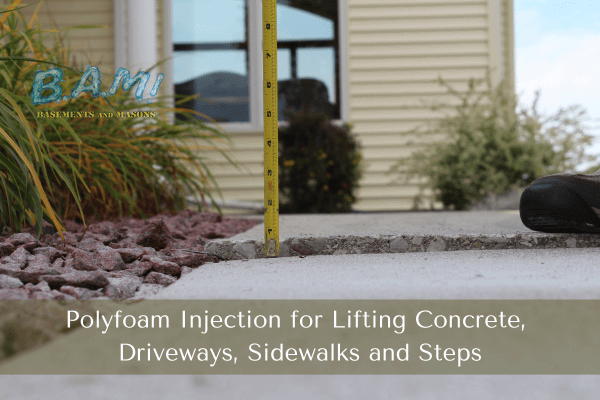Getting The Best Basement Waterproofing To Work
Getting The Best Basement Waterproofing To Work
Blog Article
See This Report on Best Basement Waterproofing
Table of ContentsSee This Report on Best Basement WaterproofingThe Only Guide to Best Basement WaterproofingAbout Best Basement WaterproofingSome Of Best Basement WaterproofingIndicators on Best Basement Waterproofing You Should Know
uses excavation techniques toward all-time low of the framework's foundation. includes eliminating wetness after it has actually gone into the cellar. AdvantaClean's qualified specialists and professionals will certainly locate the water resource. If wall or slab splits are present, we will certainly inject polyurethane and epoxies into the fractures and secure the concession, preventing further moisture from going into.Installing cellar air flow systems, conditioning systems, or cellar dehumidifier systems to get water out of your cellar. Selecting AdvantaClean's basement waterproofing services is an efficient way to treat dampness and stop mold and mildew from endangering the structure of your home and the health and wellness of your family.
If there's condensation outside of the foil, you have high humidity in your basement. Fix it with a portable space dehumidifier or a whole-house humidifier system instead of waterproofing products. If the aluminum foil has condensation on the inside surface (alongside the wall), the soil around your house might be naturally damp from a high water table or inadequate dirt drainage.
You can waterproof simply your interior wall surfaces, which may address the problem. Once they dry out, they adhere completely to concrete and masonry walls.
Best Basement Waterproofing Things To Know Before You Buy
Swirl the brush at the final phase of application to offer the wall an attractive, completed appearance. Concrete waterproof finishes can not be related to previously painted surfaces; examine the tag. A 5-gallon pail costs about $60. Known as densifiers, they are appropriate only for wall surfaces that haven't been repainted or secured.
Yet you clean, roll, or spray it on a lot more heavily one gallon covers just 75 square feet, not the 300 square feet regular with basic paint. Water-proof paint is fine for DIY application. You can apply it over painted surface areas, and paint over it once it's cured (one gallon costs $37).
It can set you back $10,000 to $15,000, depending on the work required. Exterior waterproofing includes digging deep into throughout the house to the full depth of the foundation walls, after that mounting a water resistant coating or membrane topped by drain panels. The panels offer a very easy course for water to flow to an external French drainpipe at the base of your foundation.
Fascination About Best Basement Waterproofing
We've all been caught in a tornado without umbrella or raincoat. And it's always a recipe for catastrophe: whatever's wet, your coiffure is spoiled, and things are getting mildewy. A cellar without waterproofing is kind of like that. Minus the spoiled coiffure component. Your basement does not want to go with a rainstorm without appropriate defense just as long as you do not intend look what i found to.

Exterior waterproofing is a waterproofing method that includes securing your home from the outside. It's sort of like a moat around a castle. It includes digging a trench around your entire house to the foundation (concerning 8 to 10 feet down). The foundation walls are after that cleaned, sealed, and covered with a water-proof membrane or sealer.
The Best Guide To Best Basement Waterproofing
It's an extra involved procedure that requires digging up your yard, which is costly and time-consuming. Exterior waterproofing entails removing every little thing bordering the residence, consisting of decks, driveways, sidewalks, landscaping, air conditioning systems, decks, and so on. If any one of the work was done incorrectly and water is still entering your basement, there isn't much you can do to remedy or repair it.
Interior basement waterproofing entails waterproofing Best Basement Waterproofing from the within. Any kind of water that leaks into your basement is redirected prior to it touches your flooring. It's kind of like wearing a raincoat under your garments. It involves two points: a water drainage track and a sump pump. It works by sealing the inside of your cellar wall surfaces and floorings so water that attempts to enter is directed out with a sump pump.
It's a reliable technique to waterproof your basement. The disadvantage of interior basement waterproofing mainly has to do with the installation process.
Best Basement Waterproofing Things To Know Before You Get This
To conclude, exterior and indoor basement waterproofing are both effective methods of securing your home from water damage. Exterior waterproofing develops an obstacle that stops water from entering your home, while indoor waterproofing reroutes water that does enter your home. And it is very important to keep in mind that exterior waterproofing is a pricey and disruptive setup procedure when compared to interior waterproofing.
Whichever technique you choose, make sure you pick a dependable and reliable professional for the job. If you have any questions about cellar waterproofing, please reach out to us.
You can complete our kind here. Best Basement Waterproofing, begin a conversation in the bottom right-hand corner, or call us at 1-800-827-0702
Report this page